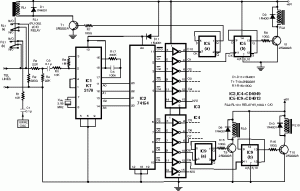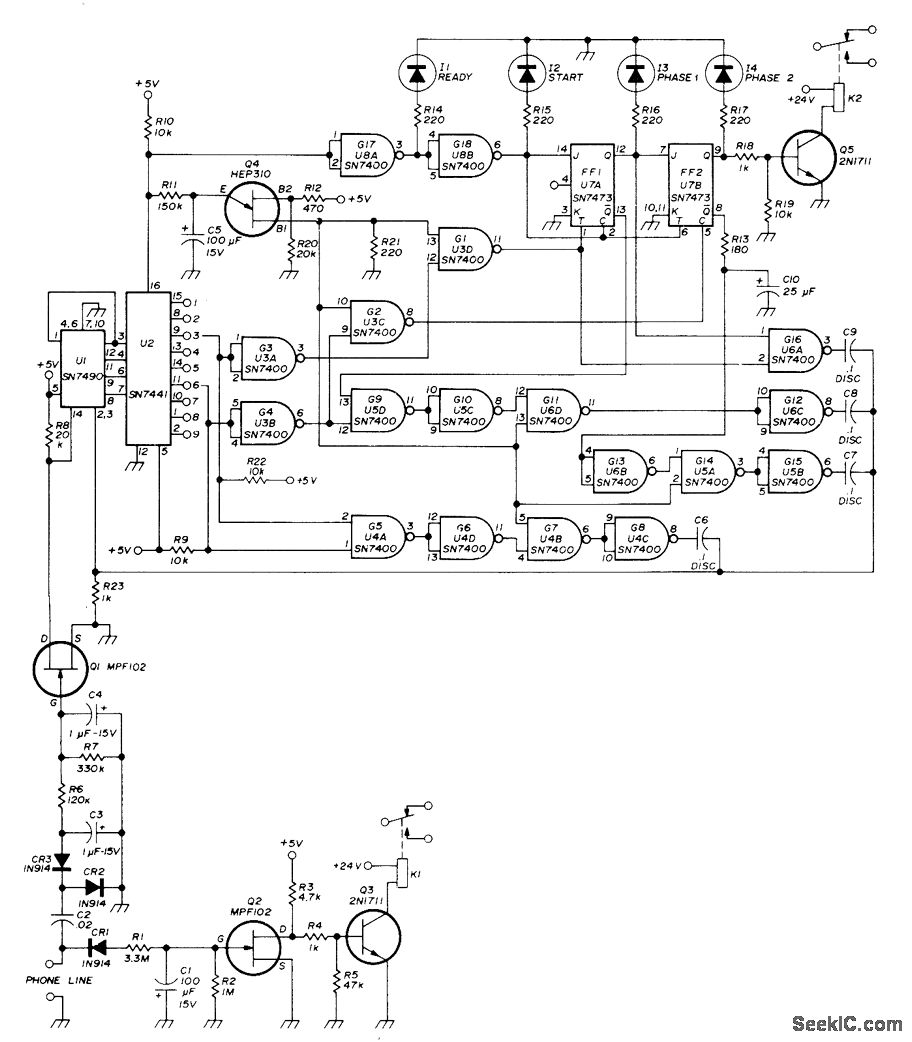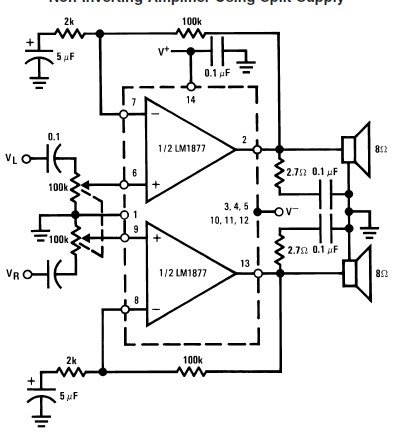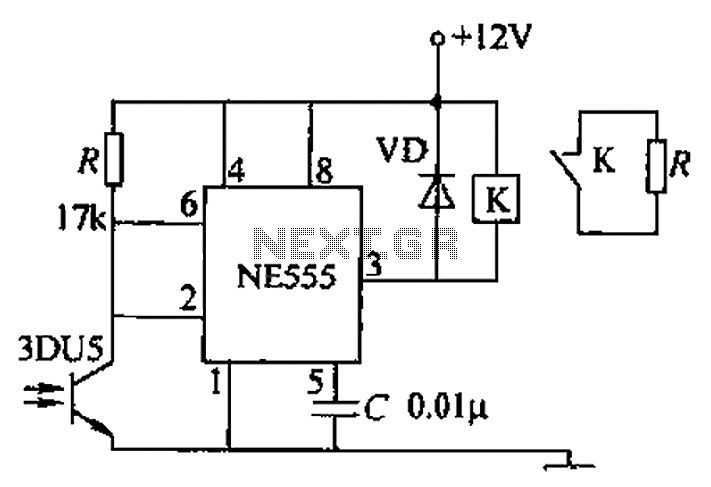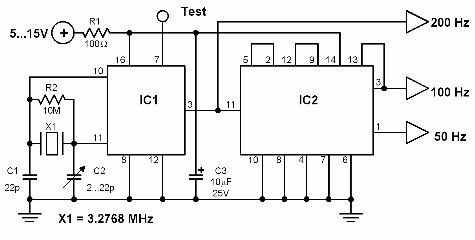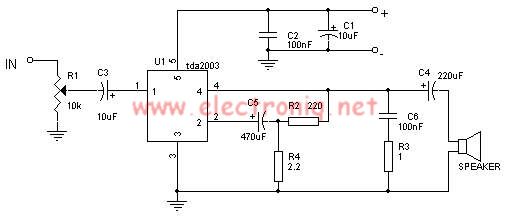
Audio Tone Control
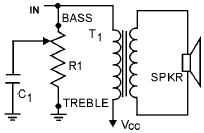
An audio tone control integrates both bass and treble controls within a single circuit. Such tone controls are typically found in lower-end audio equipment, as they conserve front panel space and require only one control knob instead of two separate ones. In this design, potentiometers R2 and R6 are housed within the same potentiometer casing, allowing the adjustment of one to influence the other, utilizing separate resistive wipers. The tone control circuit employs a simple RC filter network, where the capacitor is connected in parallel with the variable resistor. Additionally, the circuit incorporates a three-position switch to select different capacitors, thus altering the tone of the audio signal, which is only slightly more complex than a simple resistor trimmer. The circuit could be simplified further by using a single capacitor and a switch that either connects or disconnects it from the circuit, thereby reducing the component count by two capacitors. Although the adjacent circuit is not a tone control, it is related to tone circuits. A true tone control would consist of a single control knob, whereas the shown circuit utilizes three separate variable resistors. However, these resistors could be combined into a single package, effectively creating a tone control. The displayed circuit serves to illustrate another type of circuit or filter used to manage different frequency ranges. It employs an LM301 operational amplifier to regulate the circuit. The passive portion of this tone control closely resembles that of the initial circuit. However, an additional 10k resistor is integrated between the potentiometer and the operational amplifier. It is noteworthy that resistor R3 and capacitor C4 no longer connect to ground but are now part of the feedback loop. Resistors R4 and R5 have been merged into a single signal resistor linked to the trimmer. The output from the passive circuit is directed to the negative input of the operational amplifier, while the positive input is grounded through a 68k resistor, which serves to offset bias currents. This example circuit also provides typical component values for a standard tone control. The subsequent topic addresses equalizer circuits, which function as single-band tone controls, with links available for more complex two and three-band tone controls.
The audio tone control circuit described employs a combination of passive and active components to achieve frequency response manipulation. The primary function of the tone control is to adjust the bass and treble levels of the audio signal to suit user preferences or to compensate for deficiencies in the listening environment. The use of a single potentiometer for both bass and treble adjustments simplifies user interaction while maintaining functionality.
In the schematic, the potentiometers R2 and R6 are configured to allow simultaneous adjustment of bass and treble frequencies. This dual control mechanism is beneficial in compact audio systems where space is a premium. The RC filter network, consisting of a resistor and capacitor, is designed to attenuate specific frequency ranges, allowing for the desired tonal shaping.
The implementation of a three-position switch adds versatility to the tone control by providing different capacitor values for selection, which alters the circuit's frequency response characteristics. This feature allows users to tailor the audio output to their specific listening preferences or adapt to different audio sources.
The operational amplifier (LM301) plays a critical role in the active portion of the circuit. It amplifies the signal while also providing feedback through the additional 10k resistor, which helps stabilize the gain and improve linearity. The configuration ensures that the tone adjustments made at the potentiometers are effectively translated into the output signal.
The design also highlights the importance of component values in achieving the desired performance. The inclusion of a 68k resistor to ground at the positive input of the operational amplifier is crucial for maintaining the bias point, ensuring that the amplifier operates within its optimal range.
Overall, the circuit serves as an effective solution for audio tone control, balancing simplicity and functionality, and providing a user-friendly interface for audio signal adjustment. The additional discussion on equalizer circuits signifies the broader context of tone control within audio engineering, emphasizing the importance of frequency management in sound reproduction.An audio tone control combines both a Base control and a treble control in the same circuit. Tone controls are found on lower-end audio gear because it saves both front panel space on the unit and only requires one control knob, instead of two separate controls. In this case potentiometers R2 and R6 are coupled within the same potentiometer case, so adjusting one also adjusts the other [one knob, but having separate resistive wipers [ Rotary Wafer Definition ]. The tone control to the right just uses a simple RC filter network, with the capacitor connected in parallel with the variable resistor.
The tone control circuit directly below uses a three position switch to select a different capacitor to change the tone of the signal, and is only slightly more complicated than just using a resistor trimmer. The circuit could be made with even fewer parts by only using one capacitor and a switch that connects it to the circuit or removes the capacitor, saving two capacitors.
Although the circuit to the right is not a Tone control, it is related to a Tone circuit. A Tone control would only consist of a single control or knob, but the circuit shown uses three separate variable resistors. However what is not depicted in the graphic is that those resistors could be ganged into a single package, basically producing a tone control.
The circuit is not a true tone control, but serves to show another circuit, or filter style used to control different frequency ranges. This design uses an LM301 operational amplifier to control the circuit. The passive portion of the tone control is almost identical to the first circuit shown at the top of the page.
However there is an additional 10k resistor added between the potentiometer and the Op Amp. Note also that resistor R3 and capacitor C4 are also no longer returned to ground, but now form part of the feedback circuit. Resistor R4 and R5 has also been combined into a signal resistor, which is now connected to the trimmer.
The output of the passive circuit is now applied to the negative input of the Op Amp. The plus input of the amplifier is taken to ground via a 68k resistor, which is only used to compensate for bias currents. Note that this example circuit also provides component values for a typical tone control. This next topic concerns Equalizer Circuits, which are really just single-band tone controls, or use the links just to the right for more complicated 2 and 3-band tone controls.
🔗 External reference
The audio tone control circuit described employs a combination of passive and active components to achieve frequency response manipulation. The primary function of the tone control is to adjust the bass and treble levels of the audio signal to suit user preferences or to compensate for deficiencies in the listening environment. The use of a single potentiometer for both bass and treble adjustments simplifies user interaction while maintaining functionality.
In the schematic, the potentiometers R2 and R6 are configured to allow simultaneous adjustment of bass and treble frequencies. This dual control mechanism is beneficial in compact audio systems where space is a premium. The RC filter network, consisting of a resistor and capacitor, is designed to attenuate specific frequency ranges, allowing for the desired tonal shaping.
The implementation of a three-position switch adds versatility to the tone control by providing different capacitor values for selection, which alters the circuit's frequency response characteristics. This feature allows users to tailor the audio output to their specific listening preferences or adapt to different audio sources.
The operational amplifier (LM301) plays a critical role in the active portion of the circuit. It amplifies the signal while also providing feedback through the additional 10k resistor, which helps stabilize the gain and improve linearity. The configuration ensures that the tone adjustments made at the potentiometers are effectively translated into the output signal.
The design also highlights the importance of component values in achieving the desired performance. The inclusion of a 68k resistor to ground at the positive input of the operational amplifier is crucial for maintaining the bias point, ensuring that the amplifier operates within its optimal range.
Overall, the circuit serves as an effective solution for audio tone control, balancing simplicity and functionality, and providing a user-friendly interface for audio signal adjustment. The additional discussion on equalizer circuits signifies the broader context of tone control within audio engineering, emphasizing the importance of frequency management in sound reproduction.An audio tone control combines both a Base control and a treble control in the same circuit. Tone controls are found on lower-end audio gear because it saves both front panel space on the unit and only requires one control knob, instead of two separate controls. In this case potentiometers R2 and R6 are coupled within the same potentiometer case, so adjusting one also adjusts the other [one knob, but having separate resistive wipers [ Rotary Wafer Definition ]. The tone control to the right just uses a simple RC filter network, with the capacitor connected in parallel with the variable resistor.
The tone control circuit directly below uses a three position switch to select a different capacitor to change the tone of the signal, and is only slightly more complicated than just using a resistor trimmer. The circuit could be made with even fewer parts by only using one capacitor and a switch that connects it to the circuit or removes the capacitor, saving two capacitors.
Although the circuit to the right is not a Tone control, it is related to a Tone circuit. A Tone control would only consist of a single control or knob, but the circuit shown uses three separate variable resistors. However what is not depicted in the graphic is that those resistors could be ganged into a single package, basically producing a tone control.
The circuit is not a true tone control, but serves to show another circuit, or filter style used to control different frequency ranges. This design uses an LM301 operational amplifier to control the circuit. The passive portion of the tone control is almost identical to the first circuit shown at the top of the page.
However there is an additional 10k resistor added between the potentiometer and the Op Amp. Note also that resistor R3 and capacitor C4 are also no longer returned to ground, but now form part of the feedback circuit. Resistor R4 and R5 has also been combined into a signal resistor, which is now connected to the trimmer.
The output of the passive circuit is now applied to the negative input of the Op Amp. The plus input of the amplifier is taken to ground via a 68k resistor, which is only used to compensate for bias currents. Note that this example circuit also provides component values for a typical tone control. This next topic concerns Equalizer Circuits, which are really just single-band tone controls, or use the links just to the right for more complicated 2 and 3-band tone controls.
🔗 External reference
